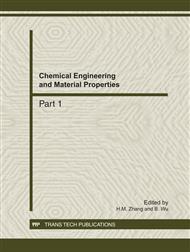p.107
p.111
p.116
p.121
p.126
p.130
p.134
p.138
p.143
Effect of Tide on Sewage Disposal by Bio-Film Process Dosing with Enzyme
Abstract:
The paper studied the effect of tide on the removal rate of COD, NH3-N and TP in the dosing pool in order to provide data to simulate disorderly discharged sewage in tidal rivers. Due to the dilute effect of rivers, the removal rate of COD, NH3-N and TP at the tidal state was higher than that at no tidal state. At the tidal state, the average removal rate of COD, NH3-N and TP was 60.8%, 55.7%, 55.6%. At no tidal state, the average removal rate of COD, NH3-N and TP was 57.5%, 47.5%, 8.6%. At the tidal state, the upper bio-film was exposed to air and the activity of microorganism decreased, and the activity of microorganism was high at middle-level bio-film. Therefore, the utilization of bio-film at the tidal state was lower than that at no tidal state. However, due to the tidal action, rivers entered into the dosing pool and the dilute effect of rivers on the pollutants was obvious.
Info:
Periodical:
Pages:
126-129
Citation:
Online since:
December 2011
Authors:
Keywords:
Price:
Сopyright:
© 2012 Trans Tech Publications Ltd. All Rights Reserved
Share:
Citation:


